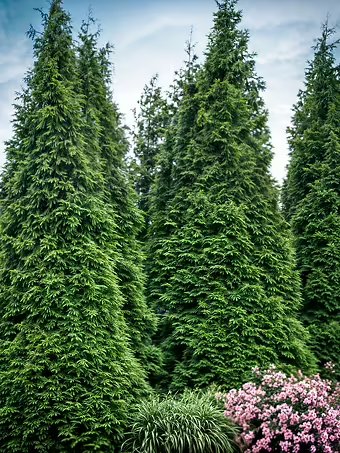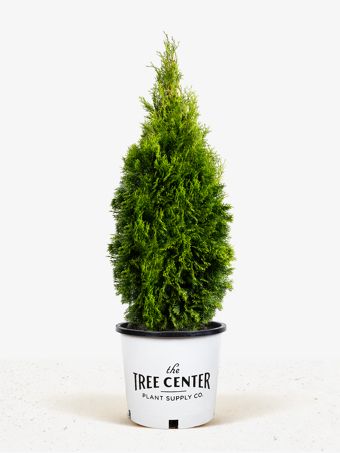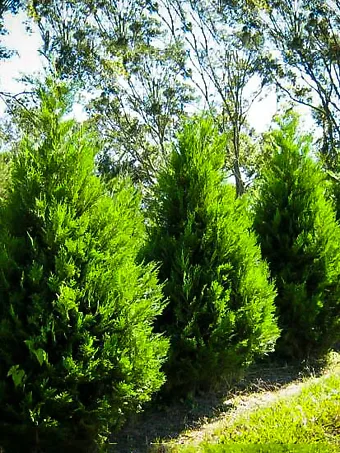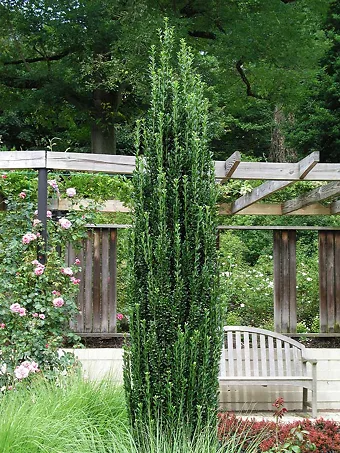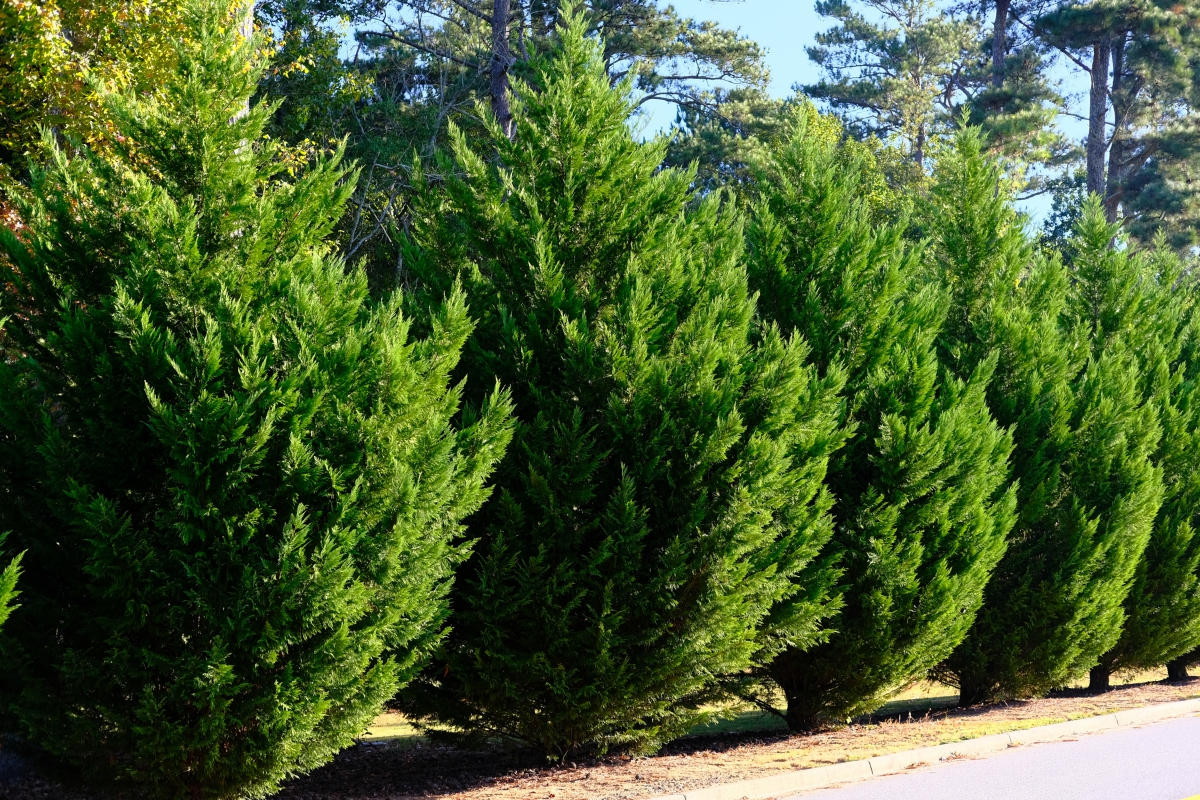
Written by s • Screening and Privacy Trees
Almost everyone likes to have privacy on their property – to be able to step outside without becoming the focus of attention of neighbors or passers-by. When you have friends or family over for a barbecue or a pool party you don’t want others looking in and spoiling your fun – after all, our homes are for us to relax in, not to be always on show.
Although it is possible to make low screening with wooden or metal fencing, nothing matches trees when it comes to making taller screens that are not only effective but attractive too. Even for lower-level screening, although a wooden fence may seem cheaper, it can have a short life before becoming shabby, rotting and needing replacement. A hedge of bushes, on the other hand, lasts for many years and gets more, not less attractive as it develops and matures. All in all, plants should be the first choice when you want to create a screen or achieve some privacy.
The other advantage you will get from putting a belt of privacy trees along your property line is protection for the rest of your garden. Wind in particular can cause a lot of damage and keep your garden cold, but with a windbreak along the boundary a much more sheltered environment is created that will allow you to grow better plants and push the envelope on your hardiness zone. Windbreaks can also reduce snow drifting, since the drop in wind-speed behind the trees causes the snow to drop there, rather than continue on towards your house. The result is less snow to clear in the area immediately around your home.
Planning a Screen of Privacy Trees
The first thing to consider is where to plant your screen. Sometimes the location is obvious – you have another house right next door with windows looking right down into your yard. You have every right to plant a screen, but remember that any part of a tree hanging over a neighbor’s property can legally be cut off by them. In some cities there may also be height restrictions for plants put right on the property line, especially along public streets and at intersections, so check with your city before deciding where to plant. You may need to set back your row of trees six feet or even more from the property line, which is a good idea anyway, to keep the center well away from neighbors.
How tall do you need your screen to be? If the windows or ugly view you want to block is some distance away you may need less height than you think, because of angles of view, to get the privacy you seek. Try holding up some tall bamboo poles to see how high your screen really needs to be. Of course you also need to look at the expected final height of the plant choices you have to be sure they can actually grow as tall as you need.
The next consideration is spacing. The closer you plant your trees the sooner you will have a solid screen, but you may also restrict their growth and make it harder to get the height you need. As well, by planting too close together you can encourage lower branches to die, ending up with a more open screen than you needed. For a single row of trees, six feet apart is about right, but check for more precise information under the individual trees you are considering. A good way to get density without restricting growth is to plant in a double row with the trees 10 to 12 feet apart, but staggered so that one row falls in the gaps of the other. This way the individual trees have more room to develop but you still produce a dense screen. For hedges, three to four feet spacing is about right, as with a hedge the clipping will keep growth thick and full right to the ground even when the plants are close together.
An interesting alternative to planting a long row, evenly spaced, is to plant clusters of a variety of trees. One long-term problem with single rows is what to do if a tree dies one day – it can be hard to fill the gaps. If instead of a straight row you plant in clusters and overlapping groups, any trees that die will not be noticed very much. You also have the visual interest of the variety and the opportunity to include some ‘special’ trees, with good fall color, flowers or fruits to enhance the beauty of your planting. You can choose to plant each group with the same tree, but change trees for the new groups, or mix up things with different trees together in each group. The effect will be different, but this approach makes an interesting and attractive alternative to the traditional solid row.
Evergreen or Deciduous?
Mostly we want screening all year round, so Evergreen Trees are the most popular choice. If you don’t need the screening during winter however, remember that deciduous trees don’t cast such heavy shade and create more seasonal interest too.
Fast Growing?
If your need is for speed, the Tree Center has several trees that will fill-in by the time you turn around. Top of the list is the Willow Hybrid, which can put on ten feet in a single year and reach 30 to 40 feet in just a few years. If you need something evergreen then the Leyland Cypress is always a favorite with gardeners for its vigorous growth and resistance to everything from air-pollution and drought to pests and diseases. Another popular choice is Cryptomeria Radicans will grow three to four feet a year and will soon be a 20 foot screen that is drought-resistant and happy across almost all of the country. If you want more information, be sure to check out our full list of fast growing trees.
To Clip or Not?
Almost every tree can be clipped into a hedge, deciduous or evergreen. Hedges are great if you don’t want too tall a screen, because of your need to be able to reach the top for clipping. They are also a great way to deal with a screen in a narrow space or on a smaller property. But if you have the room, just letting your trees grow can be a lower-maintenance approach.
If you do clip, always remember to keep the top narrower than the bottom, otherwise your hedge will thin out and develop open spaces low down – exactly where you want it as dense as possible. Remember too that the fastest growing options will need the most frequent clipping so something a little slower, like Thuja Trees or Arborvitae Trees are great choices that combine good growth rates with clipping just once or maybe twice a year once your hedge is mature.
A common mistake is to wait until your plants reach the final height you want before starting to clip. You will have a much thinner hedge that way – it’s much better to clip a few inches regularly right from the start to build a dense hedge with lots of branches low down.
Planting
It is usually easier to just dig a trench when planting a hedge or lower screen, rather than making individual holes. You only need to dig as deep as the root-ball of your plants and a trench allows you to adjust the space between the plants easily to get a good effect. Remember to water the trees in well and soak your trees once a week for the first year or two. Water and fertilizer will produce quick, dense growth and give you the screen you want with very little delay.
